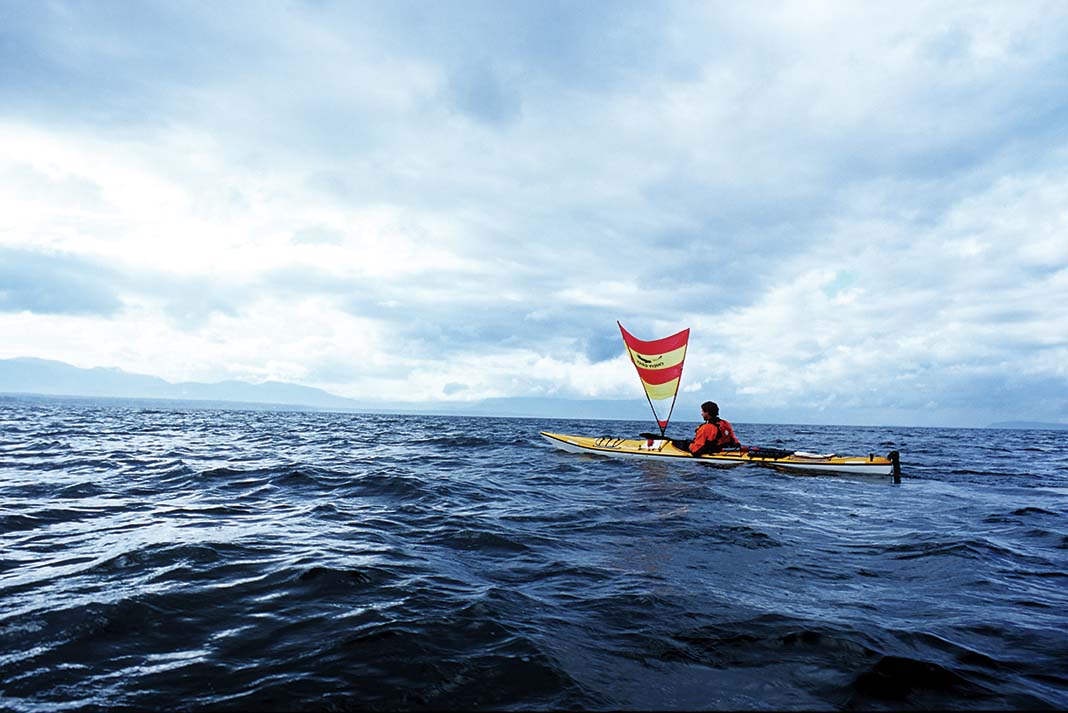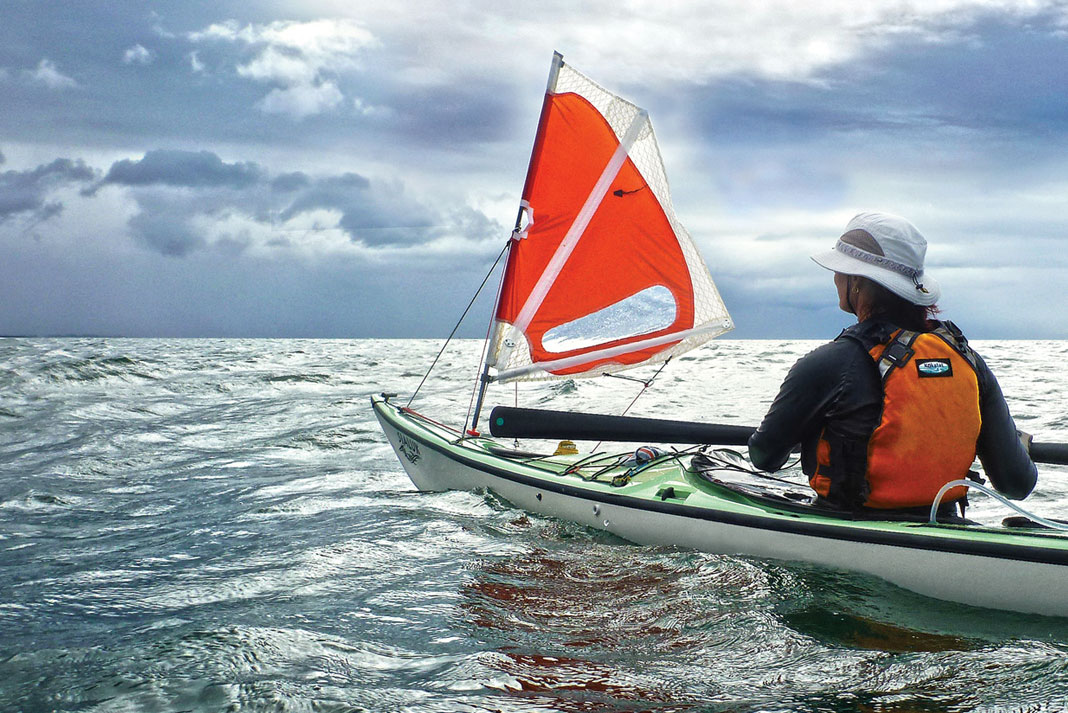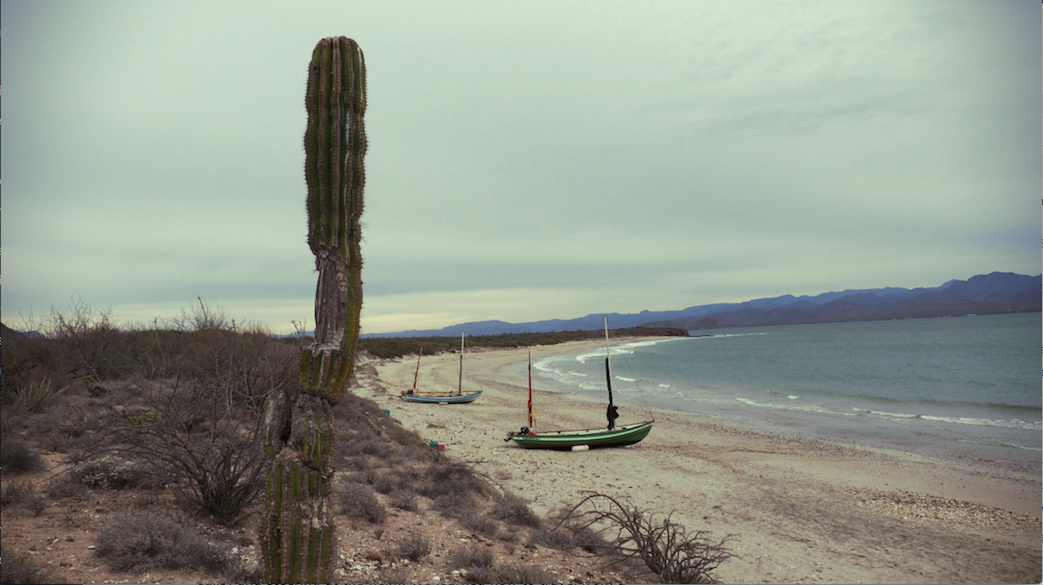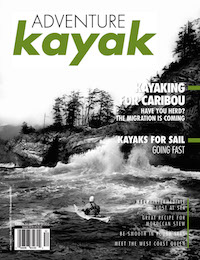Travelling on the ocean and not using wind power is like driving an electric car in Saudi Arabia. Wind’s such an obvious and available source of power, what paddler with places to go and wind breathing at his back doesn’t dream of lassoing that force with a kite or sail?
An experiment in kayak sailing
I put my sailing aspirations to the test on a weekend trip last October with my photographer friend Dave Aharonian. We planned a crossing of a windswept stretch of the Strait of Georgia from Vancouver Island 19 kilometres to Lasqueti Island. From there we would paddle or sail around Lasqueti’s southern tip to Jedediah Island Marine Park, an idyllic camping spot in a cluster of islands in Sabine Channel between Lasqueti and Texada Islands.
As a skeptical participant in my breezy adventure into new technology, Dave played the role of the curmudgeonly Luddite. Wasn’t sailing more trouble than it was worth? Wouldn’t I spend more time setting up and taking down the sail than I’d gain in speed?

In fact, Dave and I did an 80-day trip down the B.C. coast a few years ago, paddling 1,200 kilometres with prevailing summer north-westerlies at our backs day after day, and it was just this attitude that prevented us from trying sails at all. Dave, like the caveman who didn’t want to experiment with fire, was happy to paddle along at four knots. You could say that when it came to wind, he was content to pass.
Throwing caution to the wind
A few years after the fact, I was determined to find out what we’d been missing. By making the 19-kilometre crossing to Lasqueti, scudding before the infamous Qualicum wind that rips with such force through the mountain pass from Port Alberni that it has earned its own name, I figured we’d make quick time and save a few bucks on the ferry. The ultimate goal, however, was to sail with an irrefutable success that would trounce Dave’s skepticism and prove my elemental experiment was worthwhile.
The sail that I most wanted to try was a full-fledged upwind rig from Balogh Sail Designs. You may have seen pictures of the Balogh Batwing trimaran rig from adventurer Jonathan Waterman’s expedition to the Northwest Passage. The upwind rig enabled him to sail almost half the trip, even though he was going against the prevailing winds. He was even able to lash the whole collapsible rig to the deck of his single Klepper for ordinary paddling.
Sailmaker Mark Balogh started out in windsurfing and regular big boat sailing but was won over by the portability and versatility of kayaks. Although some of his customers are long-time paddlers most true kayak sailors aren’t paddlers. Purebred paddlers aren’t looking to learn new tricks. Balogh has even heard a few complain that sails ruin the sport, which is why you probably haven’t seen the Batwing at kayak symposiums.
Balogh Sail Designs is a small company by choice, a two-person operation in rural Virginia that doesn’t have the inventory to send out $1,700 loaners to magazine writers. So, we set sail with a couple of more common and affordable downwind rigs: a parafoil kite and classic v-shaped downwind sail from Spirit Sails.
Kayak sails head-to-head
For a long time I’ve dreamed of flying a parafoil from my kayak. But this dream often turned into a horrible nightmare in which I’d be pulled in a rising gale out into seas beyond my ability, I’d flip over and wet exit to find my kayak sailing away from me with kite still attached. So, when Premier Kites of Hyattsville, Maryland, offered to send me a 7.5 or 15-square-foot kayak parafoil, I chose the smaller.
There was nary a breath of wind on our crossing to Lasqueti. To fly a parafoil, six knots of wind is the minimum. Whenever I did manage to launch my parafoil in light breezes, Dave took off ahead of me on paddle power alone.
The dandy rainbow colours flying above the water did have an uplifting effect on the spirit, however. Flying a kite from your kayak is a wonderful novelty. I was so enraptured by the joy of it—combined with the growing urgency of reeling the thing in so I could catch up with Dave—that I fumbled and dropped the whole spool into the ocean. The orange spool bobbed just below the surface as I sailed away from it. I had to reel the parafoil in hand-over-hand and spend the better part of an hour retrieving several hundred feet of tangled string from the Stygian depths of the Georgia Strait. Dave the vindicated Luddite drifted impatiently in the distance.
I understood how Icarus must have felt when the wax melted.
Where the parafoil failed, the paddle pulled through, and we landed and camped on the beautiful sheep-chomped lawn of Jedediah’s Home Bay. We had it all to ourselves for the drizzly October weekend.
Return trip brings stiffer winds
With the rain, the first night brought a true October southeaster, and for the cruise back, we had a steady 15-knot blow on our stern quarter. We put up two Spirit Sails. I flew the full-size while Dave erected the smaller sail on his rudderless kayak. To get back to our launch, we had to point about 45 degrees off of downwind.
Spirit Sails are designed for downwind sailing but they can be angled to a rear quartering wind and were surprisingly useful at this angle, adding about one to two knots to our regular paddling pace.
The hardest thing about sailing for us was the siren song of the downwind run. It was tempting to follow the wind to some arbitrary destination far enough away for a daylong run riding the surf. We teased ourselves with this temptation, zigzagging toward our destination by alternating downwind thrill rides at six knots with crosswind slogs to cover distance toward shore.
Dave and I pulled into French Creek harbour ahead of schedule and broke down our sail rigs. I looked over and caught Dave smiling and eyeing his rig, really seeing it for the first time, “These sure could have come in handy on our trip down the coast.”
Feature photo: Dave Aharonian





 This article was first published in the Early Summer 2005 issue of Adventure Kayak Magazine.
This article was first published in the Early Summer 2005 issue of Adventure Kayak Magazine. 